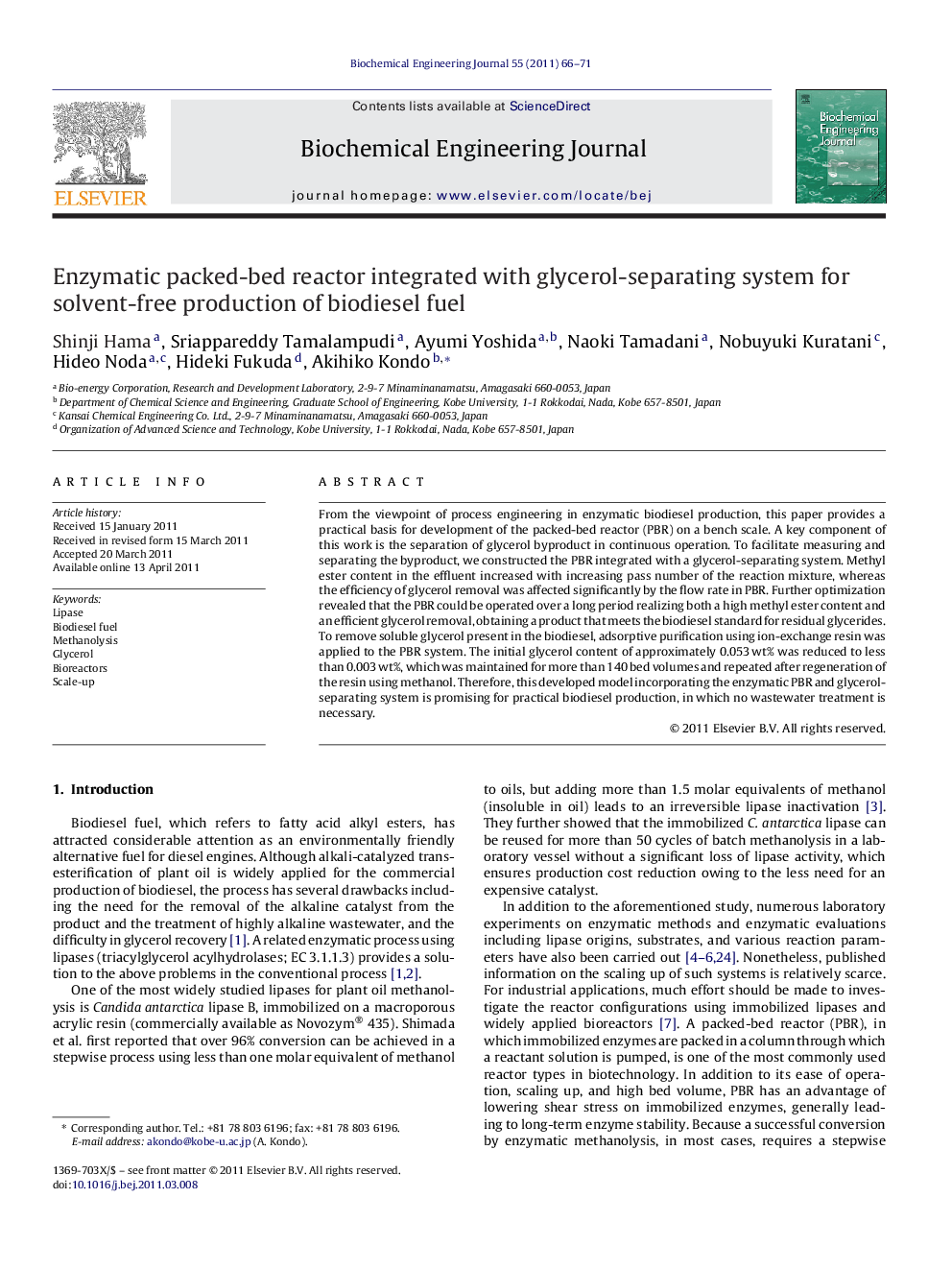| Article ID | Journal | Published Year | Pages | File Type |
|---|---|---|---|---|
| 3844 | Biochemical Engineering Journal | 2011 | 6 Pages |
From the viewpoint of process engineering in enzymatic biodiesel production, this paper provides a practical basis for development of the packed-bed reactor (PBR) on a bench scale. A key component of this work is the separation of glycerol byproduct in continuous operation. To facilitate measuring and separating the byproduct, we constructed the PBR integrated with a glycerol-separating system. Methyl ester content in the effluent increased with increasing pass number of the reaction mixture, whereas the efficiency of glycerol removal was affected significantly by the flow rate in PBR. Further optimization revealed that the PBR could be operated over a long period realizing both a high methyl ester content and an efficient glycerol removal, obtaining a product that meets the biodiesel standard for residual glycerides. To remove soluble glycerol present in the biodiesel, adsorptive purification using ion-exchange resin was applied to the PBR system. The initial glycerol content of approximately 0.053 wt% was reduced to less than 0.003 wt%, which was maintained for more than 140 bed volumes and repeated after regeneration of the resin using methanol. Therefore, this developed model incorporating the enzymatic PBR and glycerol-separating system is promising for practical biodiesel production, in which no wastewater treatment is necessary.
► A practical bioreactor design for continuous biodiesel production. ► The developed model incorporates a packed-bed reactor and glycerol-separating system. ► Flow rate is an important factor for glycerol removal from the column. ► Long-term methanolysis can be achieved, obtaining a product meeting the standard. ► For both production and purification, no wastewater treatment is necessary.
